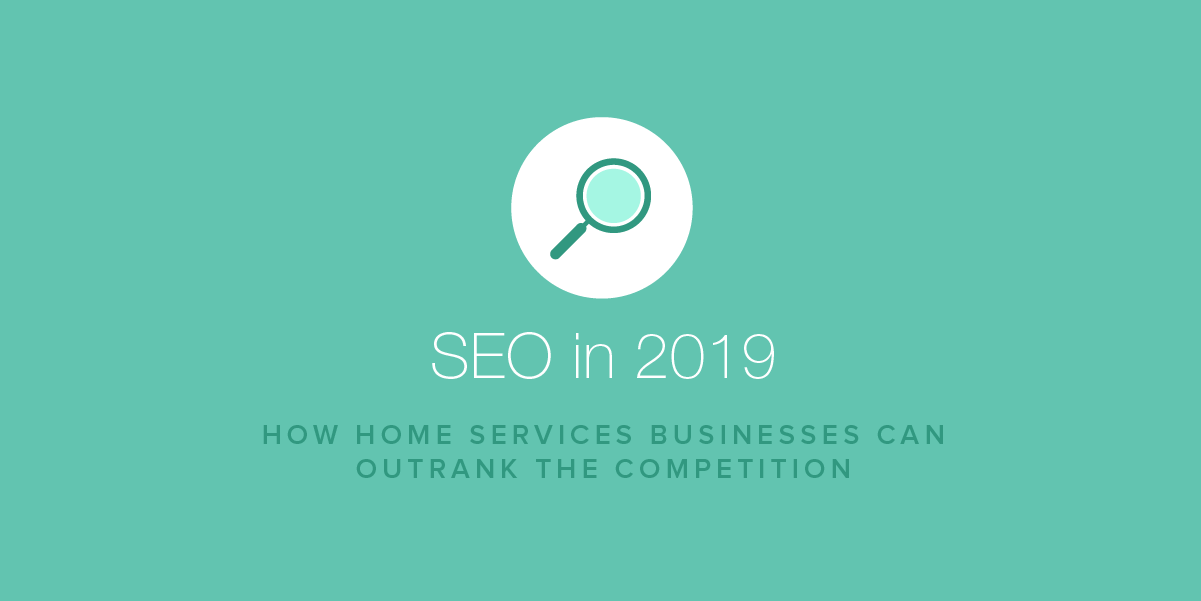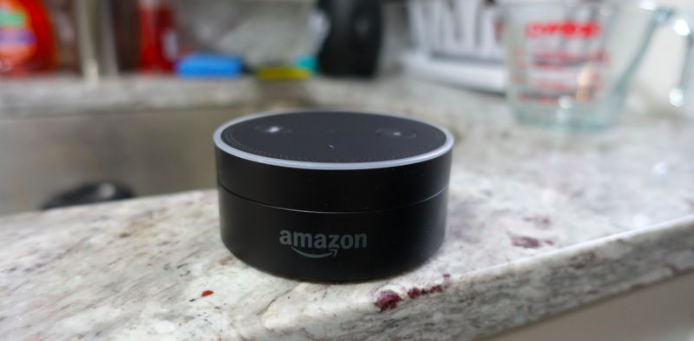SEO in 2019: How Home Service Businesses Can Outrank the Competition
- December 30, 2018
- By: Vonigo
This article about SEO in 2019 is by Joe Goldstein, Director of SEO & Operations at Contractor Calls.
A lot changed with SEO in 2018, but it’s not always easy to pick out which stories matter for service businesses.
Here are just a few of the biggest trends that will affect your SEO in 2019—and what you should do about them.
Engagement Matters More than Ever

Back before Google started Google+, it was common knowledge in the digital marketing industry that Facebook knew much more than Google did about each of their own users. Google hoped that starting their own social network would help them collect much more data about their users, which would help Google better understand how their users think, behave, and spend.
Long story short, Google+ was a bit of a disaster, and they’re finally shutting it down for good. Nowadays, Google has gotten a lot better at understanding their users, even without their own social network, and at least some of that knowledge extends to how users engage with companies, websites, and search results.
While we can’t say for sure which engagement signals definitely are and definitely aren’t ranking factors, the SEO industry generally agrees that clickthrough rates, time spent on page, the number of pages visited, and how often users click back to the search results are all ranking factors. Experts also agree that Google is getting better at tracking and understanding these behaviors, which is why they’re becoming stronger ranking factors.
What Should You Do About It?
- Focus on the customer journey. Look at the search results for your favorite keywords and see what words, SERP features, and other factors users will encounter on the way to your website. Are there videos, ads, review sites, and flat price specials that will grab their attention? If so, it’s time to brainstorm a few ideas to grab it back.
- Pretend you’ll never rank 1st and act accordingly. Once you understand that customer journey, brainstorm what you could do with your title tag, meta description, URL, and other SERP features that could steal clicks from other search results, even if you don’t rank first.
- Boost pages that rank well but have a low CTR. Check out Search Console’s performance report to find pages that are ranking great but not getting enough clicks, and then use the same process to fix that.
Google My Business is Changing Fast
In 2018, Google introduced Google Posts as a way for businesses to show news and offers in their branded search results. Our initial tests with them produced some mixed results, but chances are good that Google will continue to increase their visibility, effectiveness, and overall impact on your business.
But Google Posts aren’t the only thing that has changed with Google My Business recently. Direct messaging, reservation system integration, a follow button for users, “branded search insights,” and product collections are just a few of the monumental features that were added to Google My Business over the last year.
Google doesn’t usually announce new Google My Business features until they’re already live, and sometimes they don’t announce them at all, so the best way to see these features first is to become a regular Google My Business user.
What Should You Do About It?
- Log into Google my Business and start using it. There is so much to learn, see, and do in there, so log in and get comfortable.
- Try out Google Posts. They’re extremely easy for anyone to create and publish, they might get you some new business right away, and they could get a lot better throughout 2019. So why not give them a shot?
- Upgrade your profile. If you haven’t updated your business description or uploaded any new photos in a while, there’s no time like the present.
- Respond to reviews. Google reviews are becoming a stronger ranking factor, and so are owner responses. Your customers will be happy to see your feedback, too.
- Boost other engagement signals. Since engagement matters more than ever, upload more photos like your most popular ones, answer any questions that users have asked, and do whatever you can to keep customers coming back.
Technical SEO is Back
In March of 2018, Google finally started moving to mobile-first indexing. In case you missed it, that means that the mobile version of your site is now the “official” version that Google uses to judge your content, links, and performance. So if your site has a stripped-down mobile version, a slow-loading mobile version, or no mobile version at all, now you know why your traffic fell off this year.
Switching to mobile-first indexing was just one of several steps Google took this last year towards prioritizing mobile friendly, user friendly, and security websites. With updates running throughout 2018, chances are good that they will continue well into 2019.
What Should You Do About It?
- Make sure your mobile website is great. Based on the usual company sizes, budgets, and business goals, most home service businesses should invest in websites responsive designs that serve the same content on any device. Now is a great time to cruise through your own mobile site to make sure that it has all of the same content, features, and polish as your desktop site.
- Switch to SSL. If you haven’t switched from HTTP to HTTPS yet, you should. Google absolutely uses it as a ranking signal and Chrome even calls out sites on HTTP as “unsecure.” You can even use Cloudflare SSL to switch for free.
- Make your site loads lightning fast. If your site takes more than a few seconds to load a page, mobile users in particular are going to leave. Scan your site with PageSpeed Insights, Pingdom Tools, and WebPageTest to see how it performs, and for suggestions on how you can fix a slow site.
Change the Way You Build Links
Links have been one of the biggest components of SEO since day one, and they still are in 2018. But thanks to an explosion in low quality link outreach emails, more big websites disabling outbound links (or switching them to nofollow links), and fewer opportunities for black hat link builders, it has gotten much harder to find free, high quality link opportunities.
What Should You Do About It?
- Forget blogging about broad topics. Blog posts like “why you should hire a professional moving company” get a lot less traction than they used to. If you’re going to blog about industry topics for SEO purposes, pick niche topics like “the best way to pack a digital camera for long term storage” that lend themselves to specific, but natural link opportunities.
- Consider publishing in-depth buying guides. Pick a few tools, appliances, or pieces of equipment that you know about inside and out, and then create buying guides around them. Comparison guides, like this one on Rachio vs. RainMachine smart sprinkler controllers, make great linkable assets while also demonstrating your industry knowledge.
- Think local first, industry second. Scoring coverage on industry-related websites is much harder than getting it on locally-related websites. Local relevancy is important to ranking throughout your service area, so reach out to local bloggers, other businesses, and associations. Try producing unique local content that your readers will appreciate, like a rundown of the best independently owned coffee shops in town, and don’t worry too much if it doesn’t directly relate to your niche.
- Produce unusual content. It can be hard to cut through the noise with a blog post or infographic, so consider investing in unusual kinds of content. Content like this map of free sandbag pickup locations in San Diego can turn heads while providing real value to your users.
- Don’t overthink link metrics. PageRank isn’t what it used to be, valuing individual links has gotten more complicated, and even nofollow links could carry more value as time goes on. In 2019, worry a little less about how valuable a link is and a little more about how you’re going to build it.
Get Ready for Voice Search
Voice search is on the rise, as every other article about SEO in 2019 will be happy to tell you. But should you lose any sleep over it?
To answer this, we need to go back to the customer journey, and how people are actually using voice search.
According to BrightLocal, 58% of consumers have used voice search to find local business information in the past 12 months, but restaurants, grocery stores, and food delivery businesses are the usual targets.
When it comes to home service businesses, users are less likely to use voice search to find a new business, and are more likely to use voice search to learn more about, or interact with, a business they already know. Expect users to use voice search to ask about which services you offer, whether you have a senior discount, your hours of operation, or your pricing—because they probably already have.
What Should You Do About It?
- Don’t worry about broad FAQs. A lot of articles that talk about optimizing for voice search have enterprise websites in mind, not home service businesses. Realistically, optimizing for voice searches like “what’s the best way to clean a shower without scrubbing?” isn’t going to provide a lot of SEO benefits or drive many new leads in your market.
- Do worry about branded FAQs. If someone asks “does Gretchen’s Maid Service offer senior discounts?” and that information isn’t somewhere on your website or somewhere in your search ecosystem, that searcher is going to have a bad time. Pay attention to the actual questions you get from customers and make sure those bases are covered.
- Update your schema. Voice search relies on schema markup to understand the meaning behind and structure of your content, so learn how to check and update yours.
Diversify Your Channels
Ever since Sundar Pichai took over as Google’s CEO in 2015, Google has aggressively taken over search results with products and features that push down organic search results or make them obsolete.
The travel and hospitality industries have already suffered huge SEO setbacks from new SERP features, but the impact on home service industries has been relatively minor so far. Google Local Service Ads threatened to change that, but as of December 2018, they’re still in only 80 markets worldwide. You can see an updated list of markets and verticals here.
That being said, Google has heavily experimented with new ad products in local results and Google Maps over the last year, and each successful experiment threatens to make your SEO a little less effective.
What Should You Do About It?
- Don’t rely on SEO as your only marketing channel. Building your social followings, referral networks, and mailing list will help protect you if your SEO becomes less effective.
- Invest in marketing that pairs well with SEO. If you’re already invested in SEO, focus on marketing investments that will amplify it, but can also provide value independently. Getting more reviews, earning local press coverage, sponsoring local organizations, and joining a few business associations can all help your SEO and be helped by it, but they can also drive new business on their own.
Don’t Freak Out
Each year, SEO gets a little more complicated and a little more sophisticated, but the fundamentals have never changed. Content, links, and site structure have mattered since day one, and it’s unlikely that they’ll stop mattering in 2019.
What Should You Do About It?
- Keep doing whatever worked in 2018. If you found a strategy or two that has worked for you before, chances are good that it will keep working. So keep at it.
- Do great work. If anything, Google has gotten better at rewarding genuinely good businesses and punishing genuinely bad ones, so keep your employees happy, make your customers happy, and do good work in your community—even if it’s not all for your SEO.






